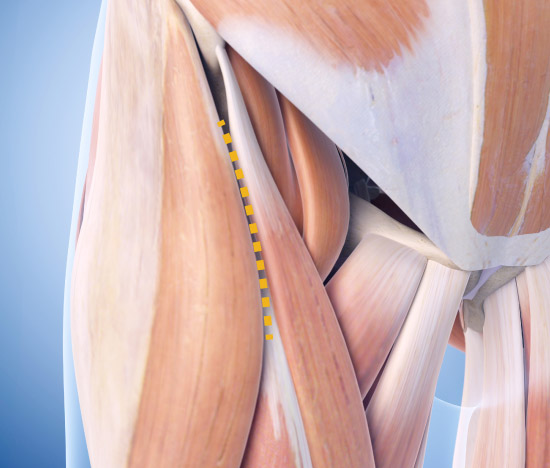What is the Anterior Approach for hip replacement?
Hip replacement surgery has been performed using the Anterior Approach for over 100 years, but has become more popular recently due to its development in minimally invasive surgery.
One of the biggest advantages of the Direct Anterior Approach over traditional surgical approaches is the visualization during the surgery. This is because in the Direct Anterior Approach, unlike traditional surgical approaches, the incision is made in the front (anterior) of the hip joint between muscles allowing clear access for the procedure.
To access this interval, the patient lays flat on their back instead of on their side as in traditional surgical approaches. This orientation used in the Anterior Approach easily allows for x-rays to be used throughout the entire procedure, allowing the surgeon see what is happening during the surgery. The Anterior Approach has more accurate implant placement compared to traditional approaches, in large part due to intraoperative imaging11,12. Accurate placement of implants plays an important role in minimizing dislocations, and the Anterior Approach has a lower dislocation rate compared to traditional approaches8,13,14.

